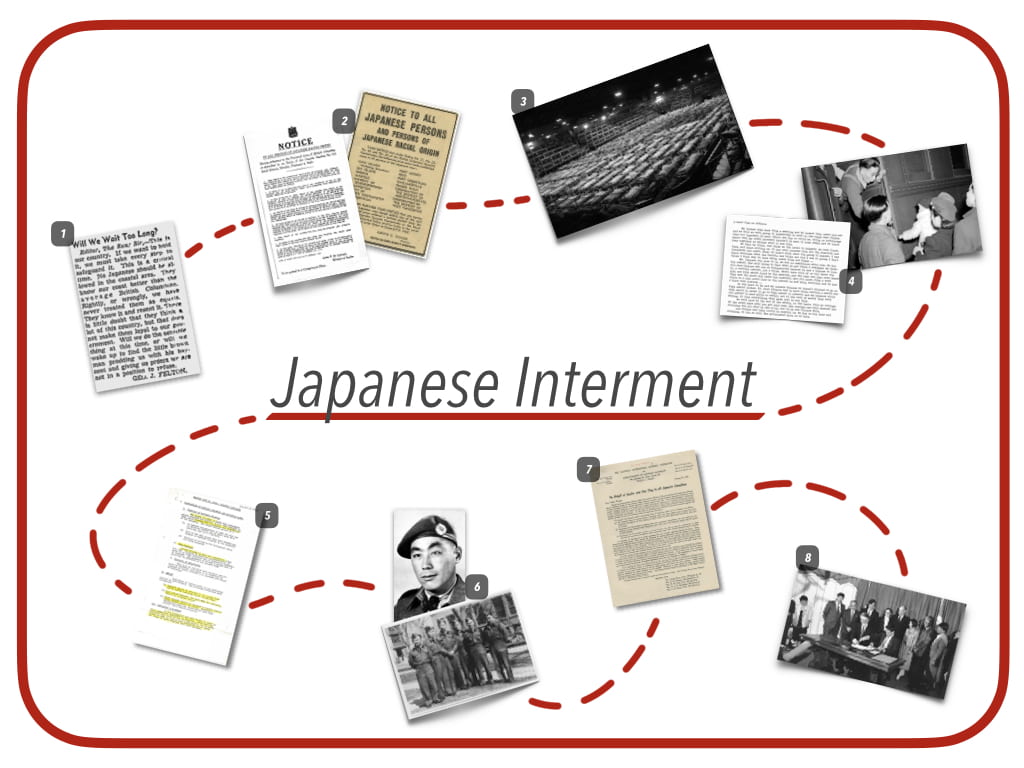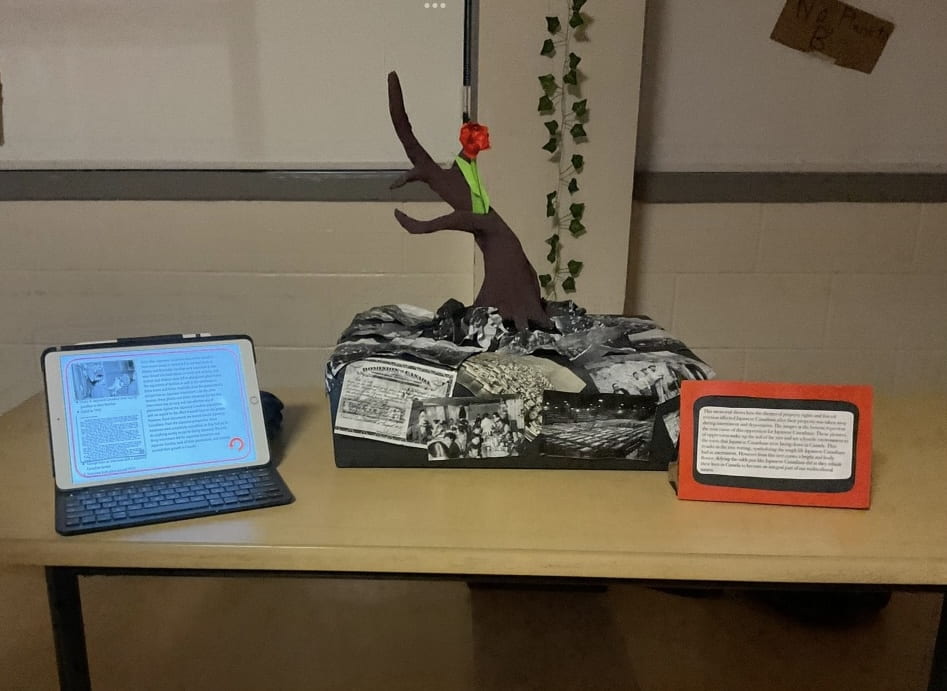Apologies are an important part of todays society. It is common place to admit wrong doing towards others as a sign of respect, but what makes an apology good. So often we just say sorry and move on with our lives, only doomed to repeat ourselves as we have not taken meaningful actions to correct our wrong doings. This was the problem we were trying to solve in our newest project called Ology of Apology.
Driving Question
How can we keep apologies for past wrongs alive so they are remembered and not repeated today?
For this project we learned about three different events in British Columbia’s past. The event I was researching was Japanese internment, but other people also did their projects on the Chinese head tax, and the Komagata Maru. Each of these events are now acknowledged today as discriminatory and unjust towards the minority groups, and should be used as examples of what not to do. However why do we consider these events unjust in today’s world? Furthermore would the same events still be unjust at the time that they happened and should we apologize in the future for that. All of there questions we could answer for ourselves with a new skill called ethical judgement
Ethical judgement is when we assess past actions to be right or fair while still considering the norms of the time. As we quickly found out this can be very tricky due to the historical perspective aspect of ethical judgement. When creating an ethical judgment you must always consider what the norms of the time were and if these norms justify the actions taken.

As I learned from writing this first ethical judgment on Ukrainians in Canada, having good evidence to back you up is key to make a good ethical judgment. This evidence is best when it is fact, not opinions on the events.
This is were I went deep down the rabbit hole into the land of primary sources. For our project primary sources would be our… well primary source of evidence. It was finally time to dive about my topic of Japanese Internment. This ended up being quite a fun and interesting part of the project. I think doing thorough research on a topic is becoming one of my strengths, and I was able to find many documents and primary sources in the deep dark corners of the web. I just need to be careful not to go down an unnecessary rabbit holes and keep my research focused on what I need. What I needed for this project were primary sources that told the story of Japanese Internment in Canada.
After I was satisfied with the story, I compiled all this research into a interactive keynote that you can view here:

I think one of the biggest takeaway from this project is how to interpret primary evidence to fill in the blanks. Sometimes the meaning of evidence is explicit like how the documents obviously show the hatred and actions took towards Japanese Canadians. Other pictures however can be implicit like how the picture of Japanese Canadians in Canadian war uniforms implies some of the feelings they had towards the Canadian government as well as shows the willingness to forgive.
Once we understood the story it was time to use the evidence we had found to make an argument on whether or not the actions were justified or not.

Overall I think my final ethical judgment greatly improved from my first attempt. Using primary evidence was a big part in making a strong ethical judgement, and I think the facts I incorporated into my argument really drove my points home. I’m also quite proud of how I managed to articulate my thoughts concisely and clearly. It took quite a few revisions to cut out and re-write anything that didn’t make sense but I think the effort was worth it.
With that done the winter exhibition was sneaking up on us. It was time to answer the driving question “How can we keep apologies for past wrongs alive so they are remembered – and not repeated – today?” The answer to that was to build and present a memorial for our topic through the use of symbolism. This was done in groups along with my two other classmates Alicia and Ben.
At first it was hard to think of symbolism we could use for our memorial. We started off thinking very literal, like a broken window to represent the destroyed property and homes. However after looking at some actual memorials in BC on our topic, we eventually settled on a dying tree with a sprouting flower, to represent the dying roots of Japanese Canadians in Canada as well as the fact that they had to start over from nothing. I think this goes to show the power that a little inspiration and group collaboration can do in such little time.

Finally it was time for the winter exhibition! yayy… This year’s theme was avatar, so each room had to be decorated to represent a theme from the movie.
Driving Question
What does James Cameron’s fantasy world of “Avatar” reveal about our own society?
I was put in the abandoned planet room, and once again the grade 10s were put in charge, except all the plans had been made by grade 8s and 9s. This resulted in a big problem of communication, as we had to all figure out and execute new plans in a very short time. Throughout this process I learned to be decisive and to make executive decisions. As I was the older and and more experienced group, is was my responsibility to take charge of the situation to make sure everything went together smoothly. This was a skill I struggled with at first, but by the end had enough confidence to make sure my ideas were heard the room was put together smoothly.
I have lots of other thoughts on how the exhibition went, like why the exhibition has a theme in the first place, but that rant is going to make this blog way to long so I’ll leave it for another time.
While presenting our memorial I had many interesting conversations and noticed some techniques that could make presentations more engaging in the future. The best technique I found to jumpstart a conversation was to show off something surprising. For our memorial this ended up being some of the pictures we surrounded our tree with. Pictures like the crowded livestock building or the confiscated cars with the wooden coaster in the background surprised people because they could personally relate to those places. It really brought into perspective how recent these events took place, and was a great prompt for more questions about some of the other pictures.
In the end, all of our projects as well as the driving question for the exhibition all prove that human society kinda sucks. We will purposely destroy our own planet and take away the rights of thousands of people just because they came from a certain race, and that’s just surface level injustices. The one takeaway from both these projects is the importance of education of our past wrongs. If we know the outcome and consequences then we can make more informed decisions for our future. This is what Avatar tells us about humanity. Humans are short sighted, never really caring for the big picture or long term consequences. This is the power of that memorials can have, as they are past examples of the damage that can happen when we ignore the long term consequences of our actions, in hopes to change before it’s too late, not that humans will ever ignore warnings.
That’s pretty much everything for this project and the winter exhibition. In the end I learned new skills like ethical judgement, and refined others like historical perspective as well as good communication and teamwork. I’m quite happy with all my work I produced this project. I think it was a good project to stress test some of my work habits and systems, as I’ll be looking back into those in the near future. Let’s hope this relatively stress free project is good sign for things to come. (But we all know it’s not going to be that easy)
See you next time,
Nolan🪷

